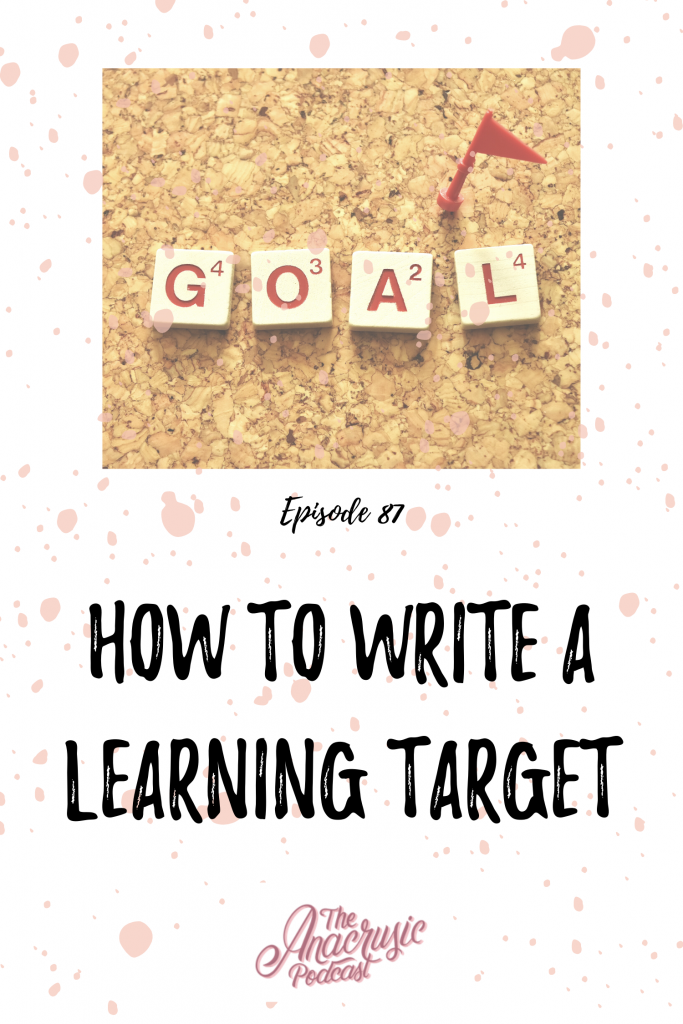CONNECT
Join the Community
Connect with your colleagues and get exclusive insider tips and tricks from Anne

One of the most commonly asked questions I get in all of Anacrusic-land is “How do you write a learning target?” It’s no doubt that learning targets, student learning objectives, behavioral objectives, or “I can statements”—whatever you call them—are essential to your students’ success and YOUR success as a teacher. Not only does a learning target give students the opportunity to self assess and evaluate their own progress, but it gives you as the teacher the opportunity to (1) focus your lesson on a specific, observable musical concept or skill, and (2) create activities that support and illustrate the target inside of your lesson. Today’s episode is all about how to write meaningful learning targets for your music classroom. Keep these four things in mind while writing your learning target.
The most important thing to remember when writing a learning target is who you’re writing it for. If we are talking about an actual posted target for students to read, identify, and use as a marker for daily success in the music room, the language has to be accessible for the kids. That means using simple language, and when necessary illustrations or other aids to highlight the learning target for the day.
While we’re thinking about targets being written predominately for students, it’s important to note that the behavioral objective be phrased in the students’ voice. That is, rather than saying “the students will,” phrase it as an “I can” statement. This not only gives students ownership over the musical learning, but gives them the mental cue needed to self assess and draw conclusions about their learning.
The reason I refer to I can statements or learning targets as behavioral objectives is because you want whatever your target is to be a specific and observable outcome. This is aided by using the phrase “I can” and putting the target in the students’ voice. Posting a target of “quarter note” is very different than what you observable behavior you are going to ask your students to use to engage with a concept.
Learning Targets are predominantly used for student self-assessment I reflection, at least as far as how they are posted and included in opening and closing routines. However, for the teacher, they should serve as an anchor to your lesson. That is, in your lesson flow, you should have areas of high and moderate concentration, or your major and minor behavioral objective, where you are focused on the specific outcome as outlined in the learning target. Additionally, all the other material in your lesson should relate to or support the learning during those behavioral objective segments.
If you’re looking for a done-for-you solution, you can check out my learning target sets by clicking here.
Connect with your colleagues and get exclusive insider tips and tricks from Anne
The Planning Playbook will help you finally knowing exactly what to teach, when. Get ready to throw “just filling time” out the door and take that first step toward intentional music teaching.
I love spoiling music teachers! By signing up below, you’ll be subscribed to all my insider tips & tricks!